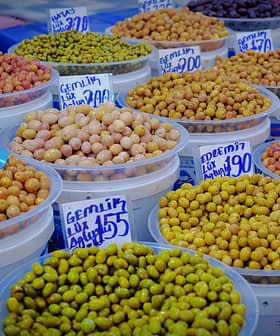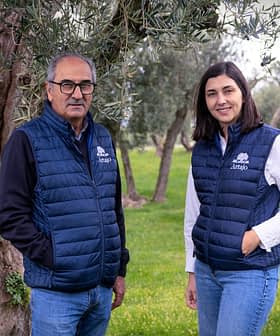 6.1K reads
6.1K readsBusiness
Record Olive Oil Prices Drive Down Consumption in Spain, but Loyalty to Category Remains
Olive oil prices in Spain have reached new record highs at origin and in supermarkets, with extra virgin olive oil prices hitting €8.988 per kilogram and increasing by 68 percent compared to last year. Despite a drop in domestic consumption due to high prices and lower availability, consumers are adapting by buying smaller formats and shifting to lower categories, with olive pomace oil sales growing by 160 percent in 2023.
After a slight reprieve, olive oil prices in Spain have reached new records, both at origin and in supermarkets.
According to Infaoliva’s price observatory, extra virgin olive oil prices at origin hit record highs again in mid-January, reaching €8.988 per kilogram, a 68 percent increase compared to last year. Prices for virgin olive oil and lampante olive oil also rose to record highs.
The dramatic increase comes after three months of price decreases at origin as the start of the harvest brought fresh batches of lampante, virgin and extra virgin olive oil to the market, somewhat alleviating the ongoing imbalance between supply and demand that has resulted in the historic price hikes.
However, fears that Spanish olive oil production in the 2023/24 crop year may once again fail to exceed 700,000 tons – down from initial expectations of 765,362 tons – paired with a reluctance from consumers to turn away from the category and the moderate rainfall during the winter have resulted in prices at origin soaring once more.
See Also:Spain Set to Eliminate Value-Added Tax on Olive Oil SalesRising prices at origin have also resulted in a 69 percent price hike in extra virgin olive oil at supermarkets in 2023, on average, according to Facua.
The consumer price watchdog surveyed the prices of 18 extra virgin olive oil brands across six major supermarket chains and found that the average price for a liter of extra virgin olive oil had risen from €6.91 in the first month of 2023 to €12 in January 2024.
As a result of two years of below-average harvests, olive oil consumption has fallen dramatically in Spain. However, research from the International University of Andalusia and Grupo Oleícola Jaén found that Spanish consumers are adapting to the lower olive oil availability and higher prices.
“There has been a drop in domestic consumption of approximately 47 percent,” Juan Vilar, an international agronomic analyst and chief executive of consultancy Vilcon who led the study, told Olive Oil Times. “Per capita olive oil consumption has fallen approximately 5.5 kilograms.”
He added that Spain is far from the only country that has seen olive oil consumption fall due to higher prices and lower availability. By his calculations, per capita global consumption of olive oil has declined from 420 to 320 grams per annum.
“On a global level, this is the first time that olive oil has not reached one percent of total animal and vegetable fat consumption,” Vilar said. In a typical year, olive oil makes up three percent of the category.
However, the study demonstrates that consumers are not shifting away from the olive oil category, with the researchers seeing an 11 percent decrease in the sale of other refined edible oils, such as corn oil or sunflower oil, paired with far more moderate price increases.
“There is insufficient olive oil available to cover demand,” Vilar said. “But the demand has not fallen much. The number of units of olive oil sold remains very similar to previous years.”
“For consumers to remain loyal to the olive oil category, they are consuming less olive oil and buying smaller formats,” he added,
This finding was reflected in the study, which found the most significant drop in extra virgin olive oil sales in containers of one liter or more, with many supermarkets abandoning the typical five-liter containers previously sold.
“Consumers have also been moving down the category list,” Vilar said, with habitual extra virgin olive oil buyers shifting to virgin and virgin purchasers changing to refined olive oil categories.
“Lastly, sales of olive pomace oil have grown by approximately 160 percent during 2023,” Vilar said.
Usually, Spain exports 80 percent of the olive pomace oil it produces. However, the low production levels mean about 70 percent of olive pomace oil production was sold domestically in 2023. “People don’t want to leave the olive oil category,” he said.
Looking ahead, Vilar said he expects prices at origin to remain stable for the time being. “If prices rise, it will not be by much, but they will not fall,” he said.
The three main factors affecting the prices will be whether the harvest meets expectations, the evolution in consumer demand and the weather during the spring and summer; climatic conditions in Andalusian olive groves in May will go a long way in determining the trajectory of prices for the rest of 2024.









